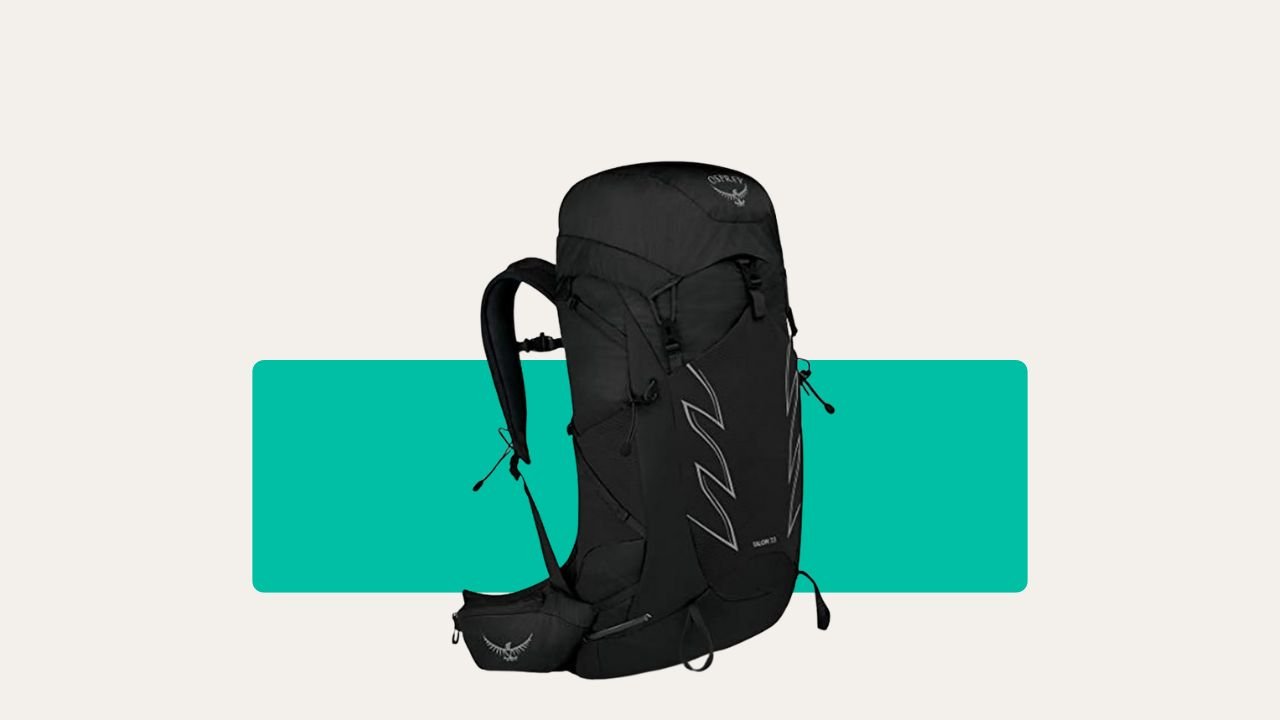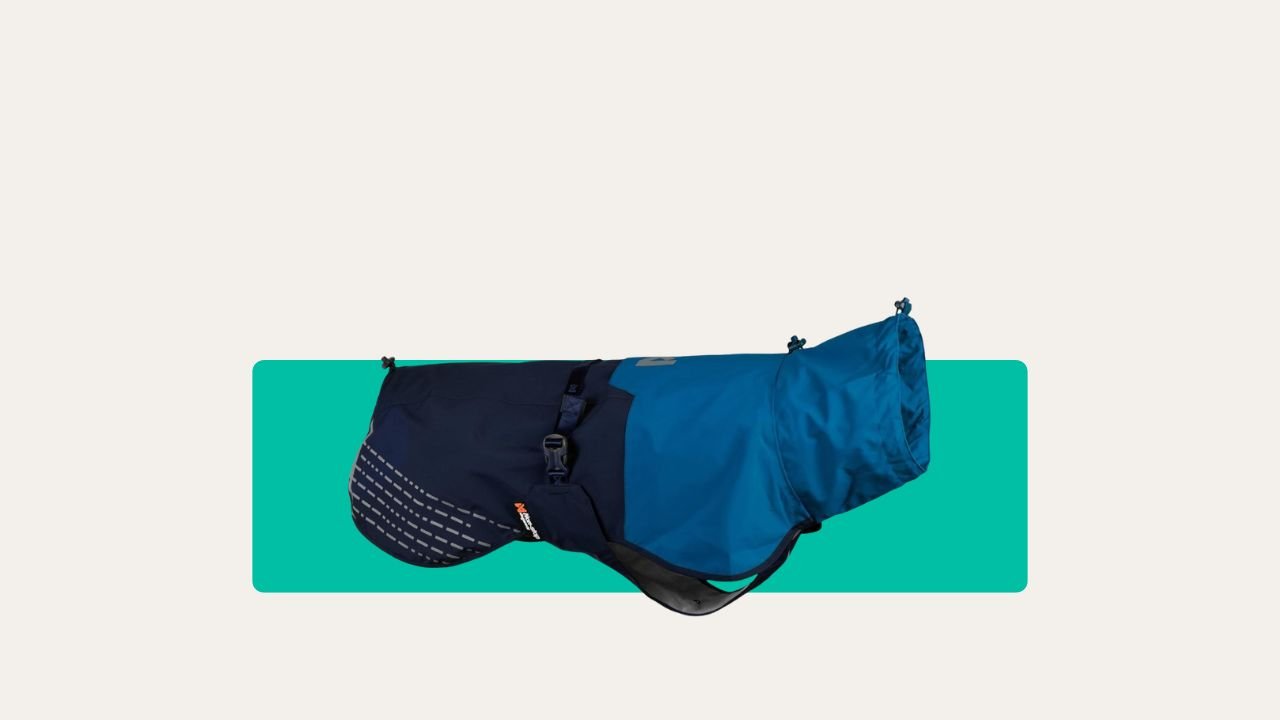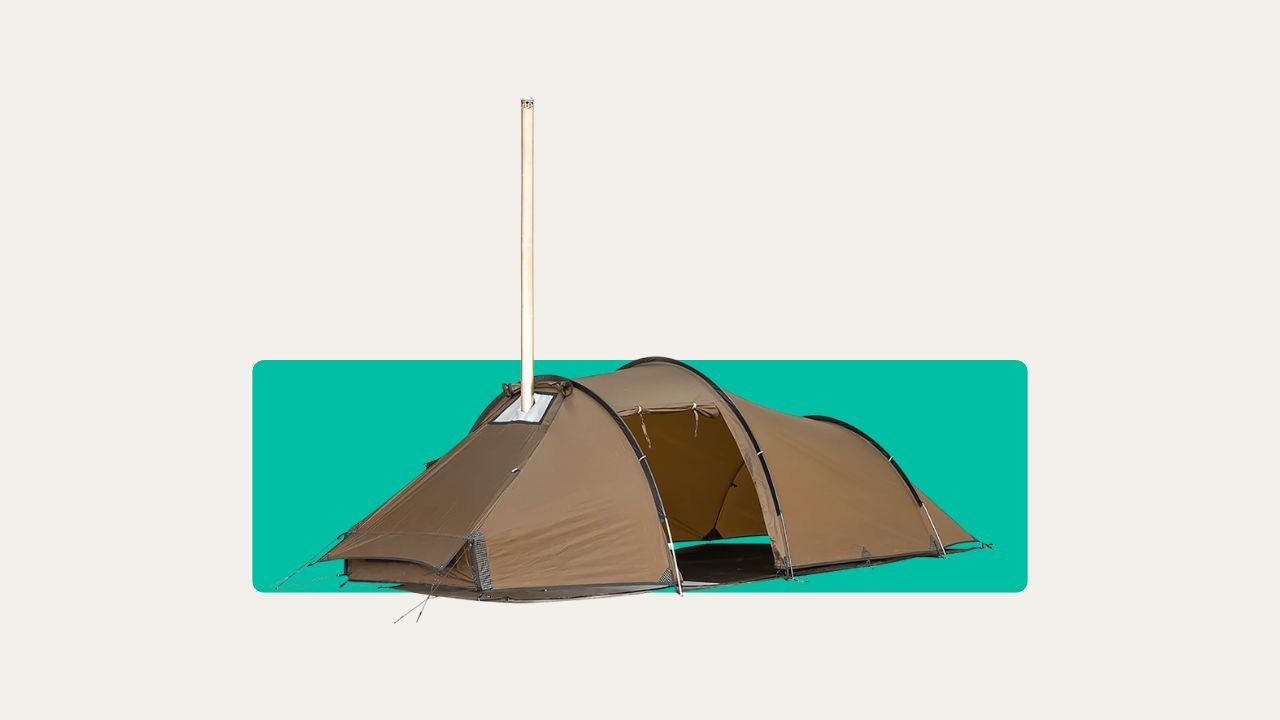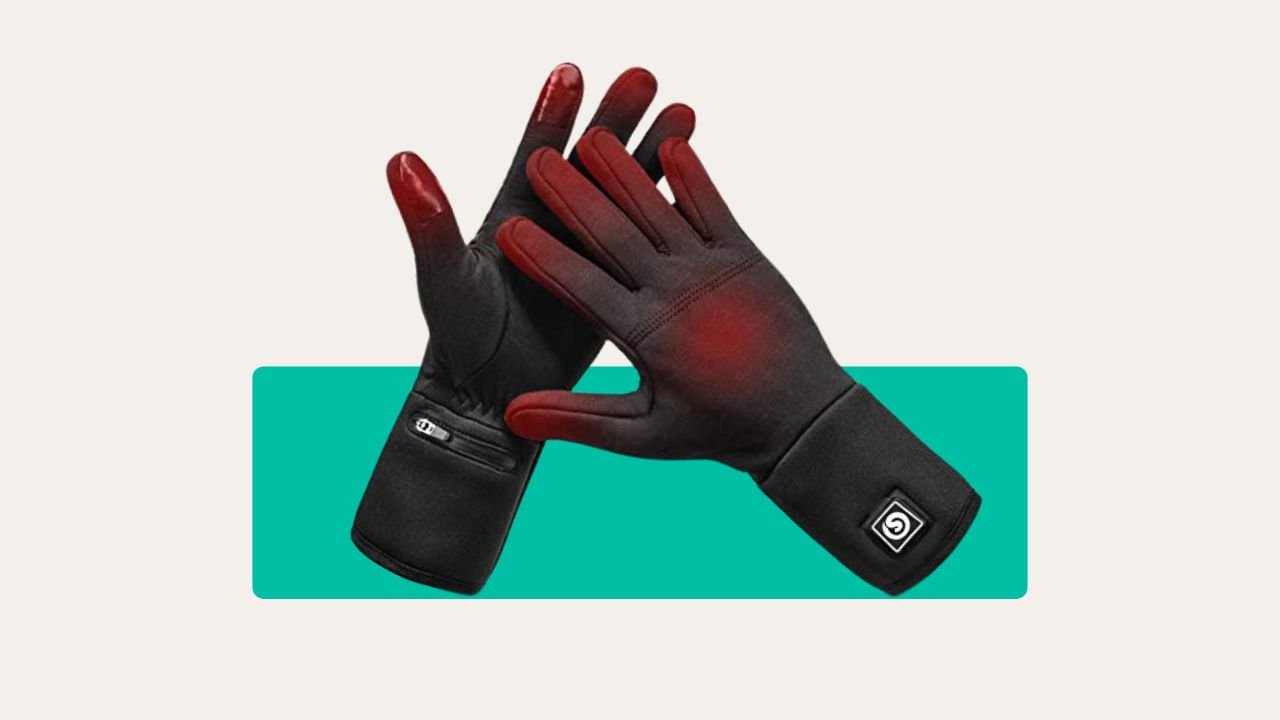Let’s face it – British weather doesn’t mess around. One minute it’s sunshine, the next you’re caught in a full-on downpour. If you spend any time outdoors, you’ll know how quickly wet gear can ruin the day. That’s where a good waterproofing spray comes in.
These sprays work by adding an invisible shield to your fabric, helping rain roll off instead of soaking in. Whether it’s your walking boots, tent, jacket, or backpack, a quick spritz can make a big difference. And the best part? You don’t need to buy a new kit – just give your old gear a refresh.
In this article, we’ve picked out the top waterproofing sprays that actually work here in the UK. No gimmicks – just solid protection to keep you dry and comfortable, no matter what the skies are up to.
Why Does Outdoor Fabric Need Protection?
Before we move on, perhaps you are asking why you even need to protect your outdoor fabric in the first place. Well, the truth is that British campers get every kind of weather. Four seasons before breakfast? Standard.
Waterproof spray is your shortcut to gear that doesn’t quit or stink of mould. I lost a decent set of garden cushions once after I “trusted the forecast” during an August BBQ. Big mistake – the forecast lied, the downpour didn’t.
Wet fabric isn’t just soggy. Constant moisture eats away at fibres, brings colour fade with the UV, and encourages mould and musty smells. Give gear a chance by keeping water and stains out – not just rain, but spilled coffee, bird bombs, and whatever the wind blows in during a blustery night.
Waterproofing sprays stop rain from soaking in, help things dry quicker, and prevent your new tent or old coat from turning into a science experiment.
Top Qualities to Look Out for in a Waterproofing Spray
Don’t grab the first can you see on the shelf. The “right” waterproof spray has to tick a few non-negotiable boxes:
- Strong Water Repellency: This makes water bead and roll away, not soak through. You want a mini waterfall effect, not a sponge.
- Stain Resistance: Keeps mud, ketchup, or spilled tea from sticking around. A bonus on family trips or messy corners of the garden.
- UV Defence: Stops fabrics from fading or breaking down in the rare British sunshine. This is crucial if your furniture or brolly lives outside all summer.
- Fabric Compatibility: Works for jackets, tents, polyester, canvas, and nylon. Some sprays are picky. So, double-check the label to ensure it matches your gear.
- Safe for You & the Planet: Look for PFC-free formulas and bluesign approval. No one needs a chemical headache while waterproofing kit.
Now, let’s go see the best waterproofing spray you should invest in when camping in the UK.
Quick Product Comparison Table
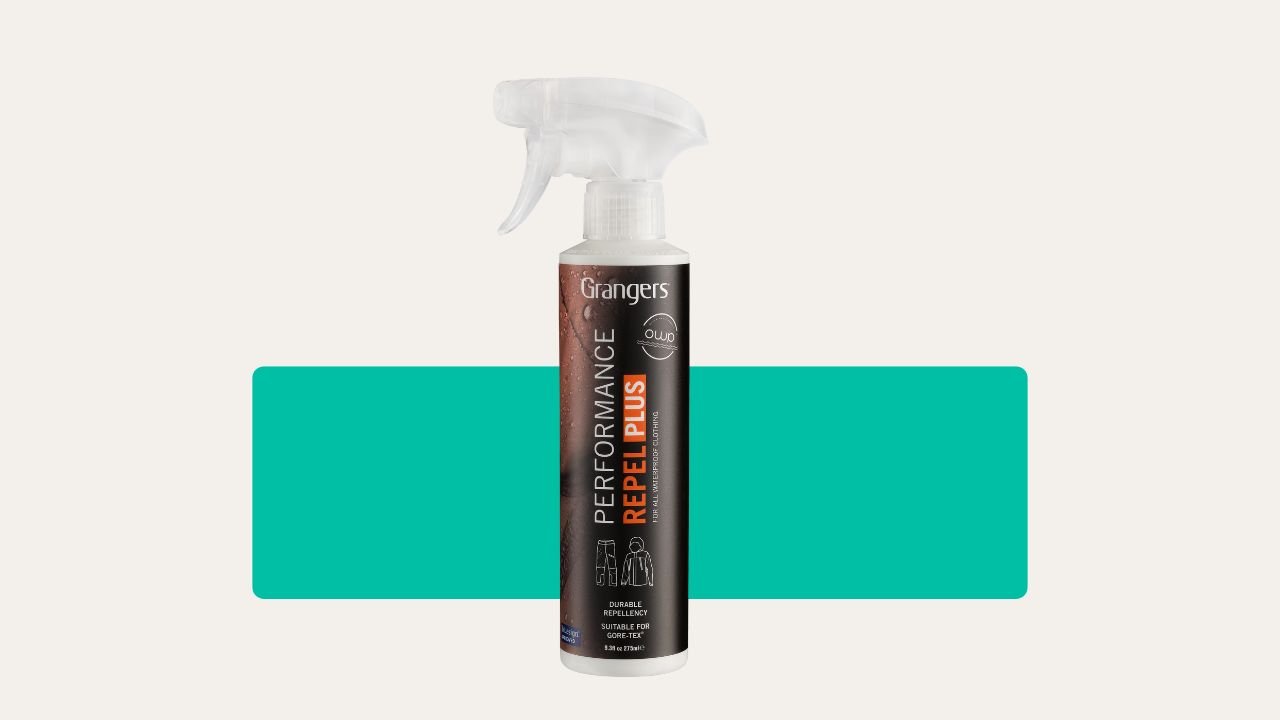
Granger's Performance Repel Plus (275ml)
Best For: Technical waterproof fabrics
Eco-Friendly: Bluesign approved
Application: Spray-on, no heat activation required; quick-drying
Notable Features: Restores durable water repellency and breathability, Safe for technical outdoor gear
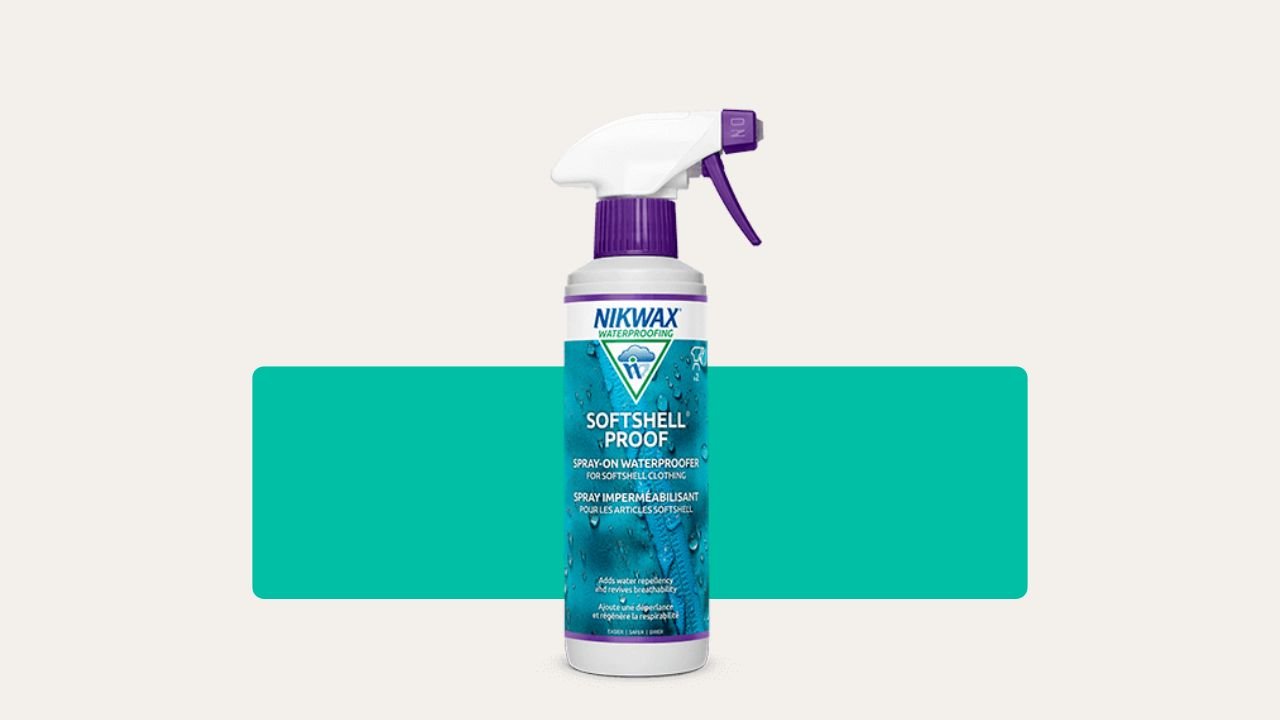
Nikwax Softshell Proof (300ml)
Best For: Restoring water repellency to softshell clothing
Eco-Friendly: Yes – water-based, biodegradable, non-flammable
Application: Spray-on; no heat activation required
Notable Features: Maintains fabric breathability and softness, Doesn’t change appearance or feel of fabric
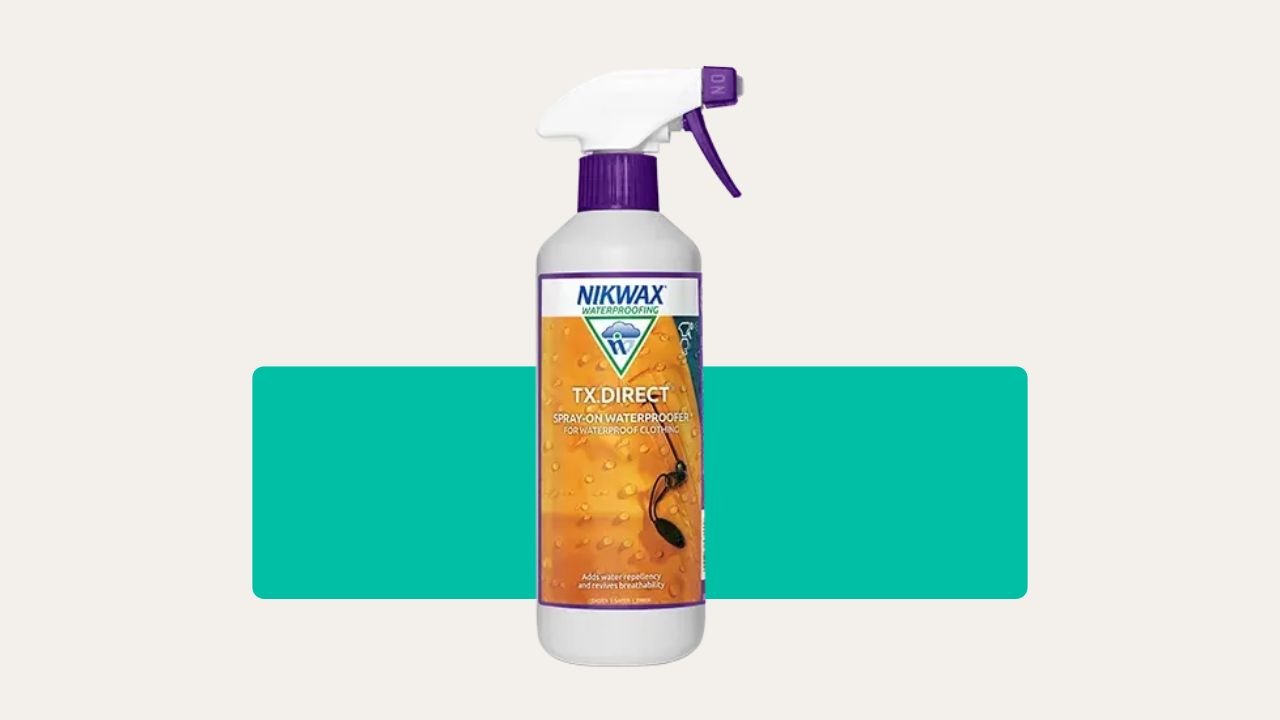
Nikwax TX Direct Spray-on Waterproofer (500ml)
Best For: Reviving waterproof breathable gear
Eco-Friendly: Yes – water-based, non-toxic, non-flammable, biodegradable
Application: Spray-on; no heat activation required
Notable Features: Maintains breathability and internal wicking, Long-lasting water repellency, Safe for indoor use
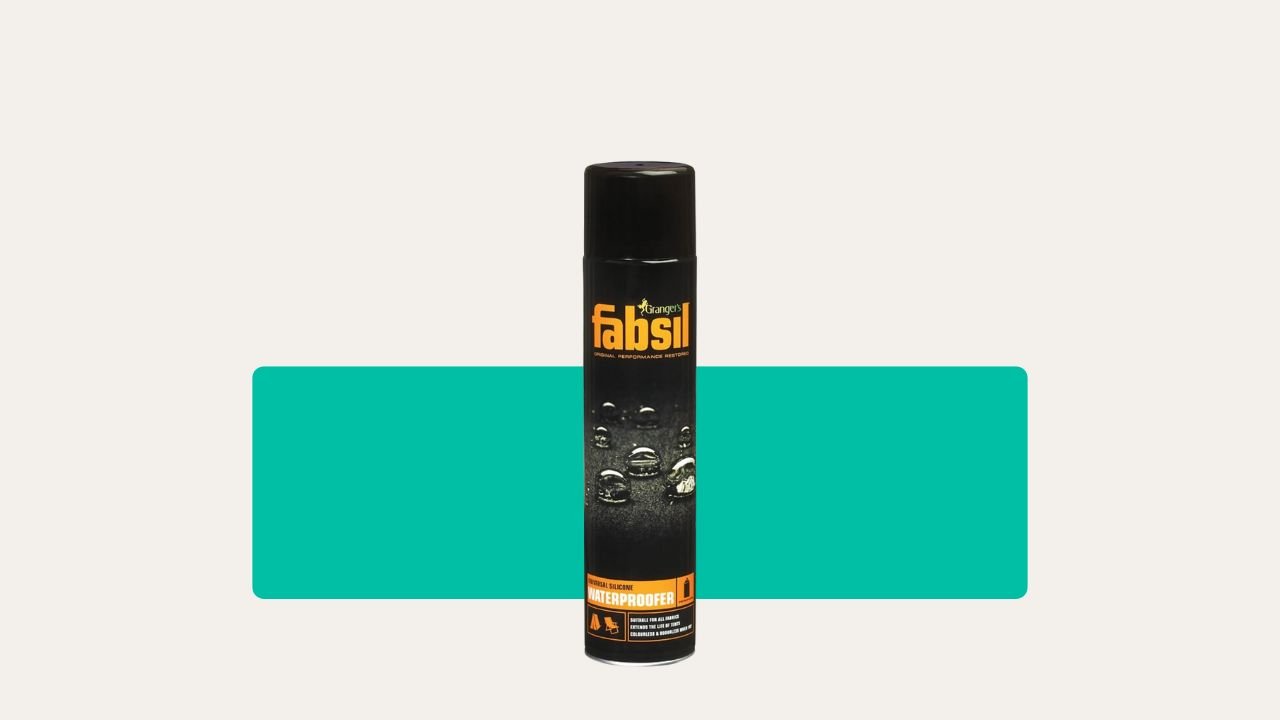
Grangers Fabsil Waterproofer (600ml)
Best For: Multi-material waterproofing – ideal for tents, boots, suede, leather, and outdoor gear
Eco-Friendly: Not especially – silicone-based and no mention of being biodegradable or non-toxic
Application: Spray-on; air-dry (no heat activation needed)
Notable Features: Works on a wide range of materials (fabric, suede, leather, sheepskin), Silicone-based formula for strong rain and stain resistance
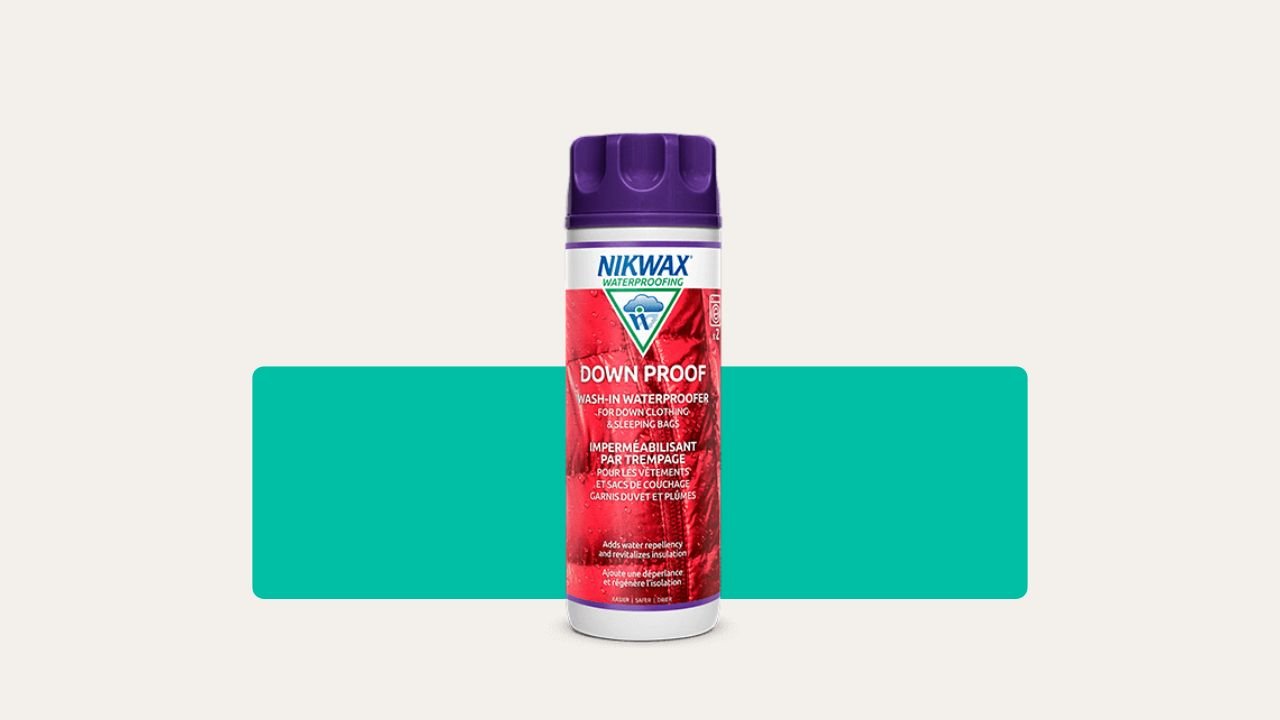
Nikwax Down Proof (300ml)
Best For: Reviving water repellency and loft in down-filled jackets and sleeping bags
Eco-Friendly: Yes – water-based and environmentally friendly
Application: Washing machine – easy, no-mess application
Notable Features: Tailored specifically for down and feather-filled gear, Maintains insulation and loft
Best Waterproofing Spray Picks in the UK
If you want choices that actually do the job, these are the sprays UK campers swear by (and I keep stocked at home). Tested by soggy park benches, windswept campsites, and plenty of last-minute “should have sprayed that” moments.
1. Granger's Performance Repel Plus (275ml)
Granger’s Performance Repel Plus is a go-to for outdoor lovers who demand performance from their gear. It’s designed specifically for technical waterproof fabrics – so think breathable jackets, windproof trousers, and even ski wear. The spray-on application is quick and easy, meaning you can even use it trailside if the skies start acting up.
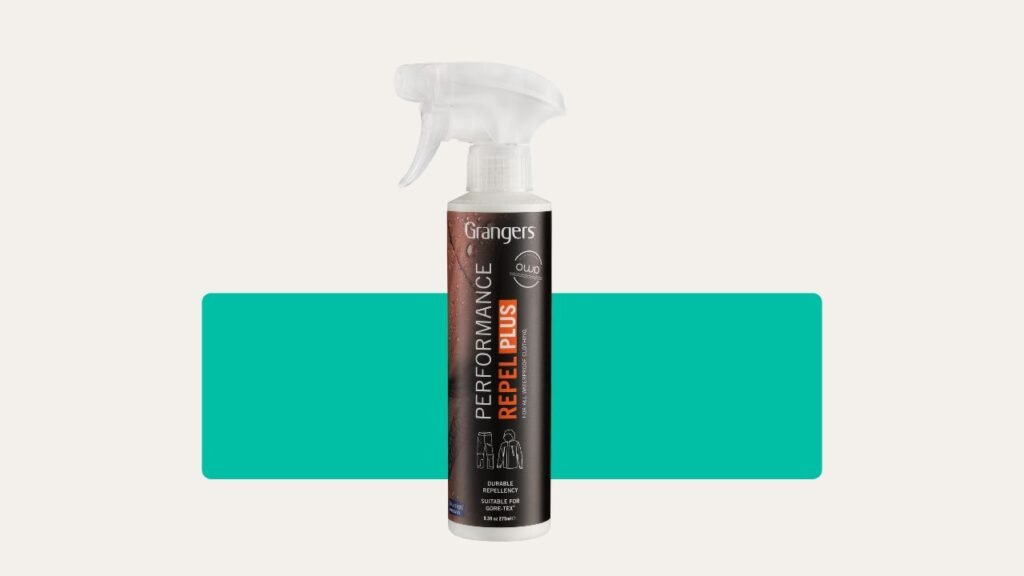
One of the best things about this spray is that it doesn’t need heat to activate. Just spray, let it dry, and you’re sorted. It’s also Bluesign approved, which basically means it meets some pretty high environmental and safety standards – a nice bonus for eco-conscious campers. The finish it leaves behind is impressively breathable, so you won’t end up sweaty and clammy underneath.
The only downside? You do need to be generous with it to get good coverage, especially on older or heavily used gear. It tends to wear out quicker than you’d like too, so frequent users may find themselves going through bottles faster than expected.
Pros
- Restores durable water repellency and breathability
- No heat activation required
- Safe for technical outdoor fabrics
- Bluesign approved for eco safety
- Compact spray bottle for on-the-go use
Cons
- Requires a heavy application for best results
2. Nikwax Softshell Proof (300ml)
If your go-to gear is made from softshell material, the Nikwax Softshell Proof spray is exactly what you need. Designed specifically for softshell fabrics like Gore Windstopper and Polartec, this spray brings back the waterproofing without ruining the feel or breathability of your kit.
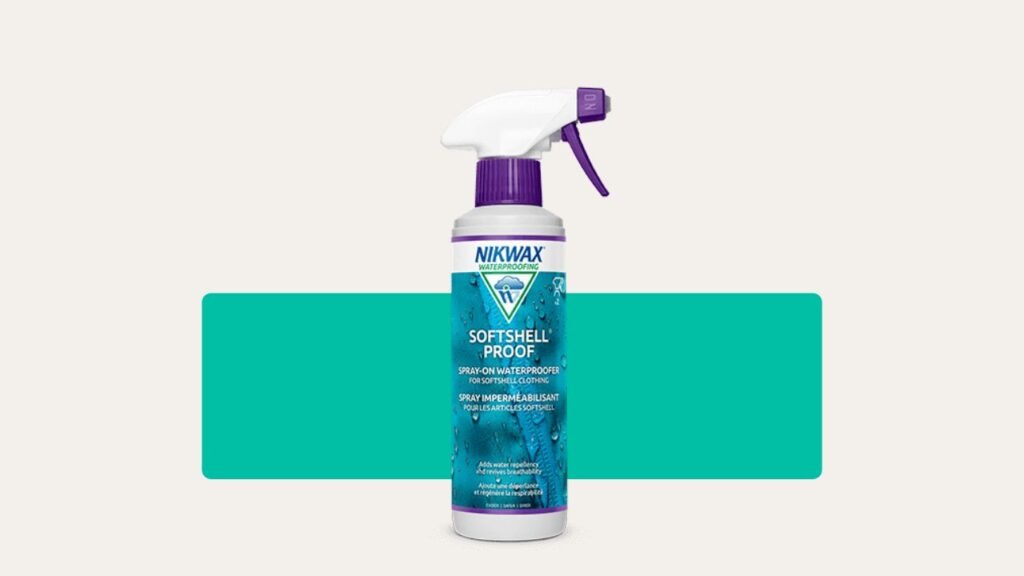
It’s water-based, biodegradable, and completely non-flammable, so you can use it indoors or out without worrying about fumes or flammability. The spray goes on easily and evenly, and it doesn’t darken or stiffen your gear (something cheaper sprays tend to do). Best of all, it doesn’t require heat activation. Just spray, let it dry, and you’re good to go.
The only catch? It’s tailored for softshell only. That means it’s not a one-size-fits-all product if you’ve got a mix of hardshell gear in your collection.
Pros
- Perfect for softshell fabrics
- Maintains breathability and comfort
- No heat required
- Environmentally friendly formula
- Doesn’t alter the fabric’s appearance
Cons
- Wears off fairly quickly
- Not suitable for hardshell clothing
3. Nikwax TX Direct Spray-on Waterproofer (500ml)
This one’s a favourite among hikers and campers for a reason. The Nikwax TX Direct Spray-On is built for wet-weather gear and performs brilliantly on breathable, waterproof fabrics like Gore-Tex and eVent. Whether it’s a rain jacket or a pair of waterproof trousers, it does the job while letting your clothing continue to breathe – no sauna effect here.
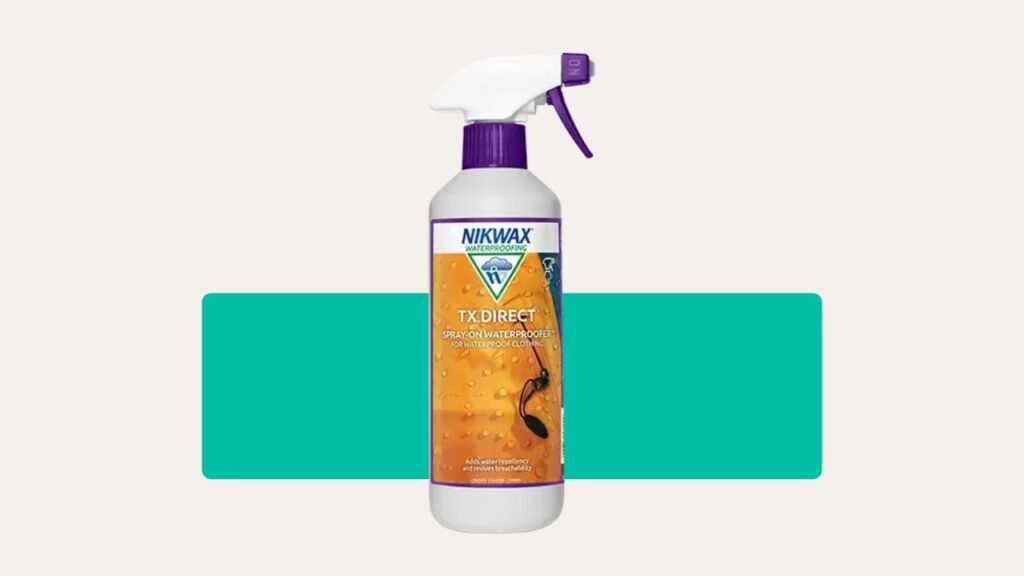
It’s also surprisingly affordable given how well it works, and the large 500ml bottle gives you plenty of coverage for multiple garments. You don’t need to heat it to activate the waterproofing, and the water-based, non-toxic formula is safe for use indoors. Plus, it doesn’t mess with the internal wicking of your gear. That’s a big bonus if you’re using performance wear.
That said, be prepared for a bit of a funky smell. Some users say it leaves behind a light vinegar scent, which may linger longer than you'd like. And because the spray is quite watery, you’ll need to go slow to avoid over-spraying or making a mess.
Pros
- Compatible with most waterproof breathable fabrics
- Long-lasting water repellency
- Maintains breathability and wicking
- Large bottle offers good value
- Non-flammable, biodegradable, and safe for indoor use
Cons
- Has a vinegar-like scent
- Watery texture makes it a bit messy to apply
4. Grangers Fabsil Waterproofer (600ml)
If you’re looking for a waterproofing spray that can handle just about anything you throw at it – from canvas tents to leather walking boots – the Grangers Fabsil Waterproofer is a solid choice. It’s designed to work on multiple materials, including suede, leather, sheepskin, and most fabrics, which makes it a great all-rounder for campers with mixed gear.
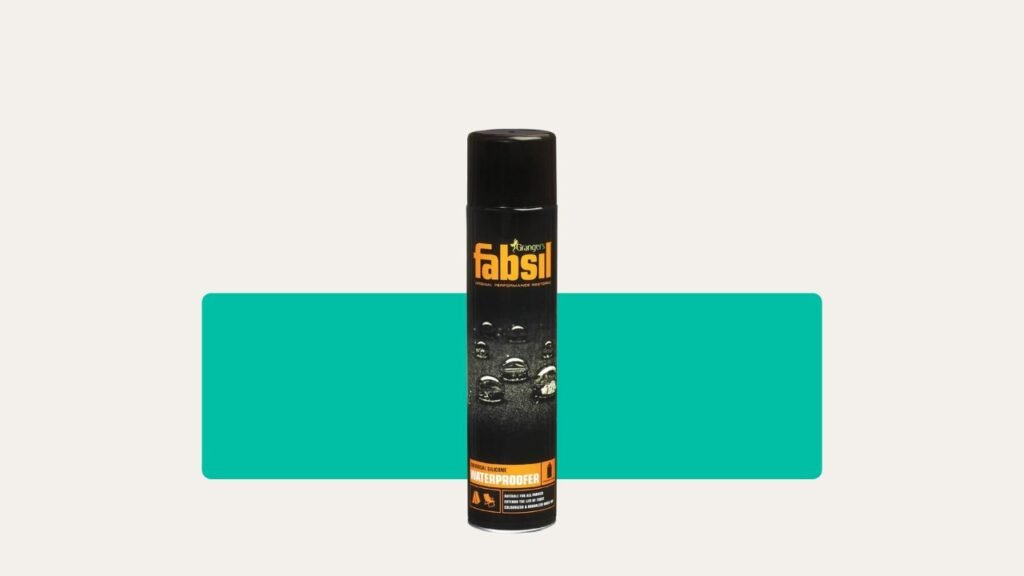
One of the best things about this spray is that it mimics the original water-repellent finish of your gear. Whether you’re sprucing up a folding camper, reviving an old garden chair, or giving your walking boots a once-over, it forms a silicone-based seal that’s tough against both rain and stains. Just spray it on and let it dry. It’s that easy.
Pros
- Works on a wide range of materials, including suede and leather
- Great for larger items like tents, awnings, and garden furniture
- Mimics the original water-repellent finish
- Silicone-based seal offers strong protection
- Very affordable
Cons
- Doesn’t always last long in wet conditions
- May not waterproof some fabrics completely
5. Nikwax Down Proof (300ml)
Got a down jacket or sleeping bag that’s lost its puff and is now a sponge in the rain? The Nikwax Down Proof is your answer. Specially made for down-filled gear, this water-based treatment restores water repellency while keeping the insulation fluffy and breathable. That’s a big deal because down and water don’t mix well – wet feathers clump and stop insulating.
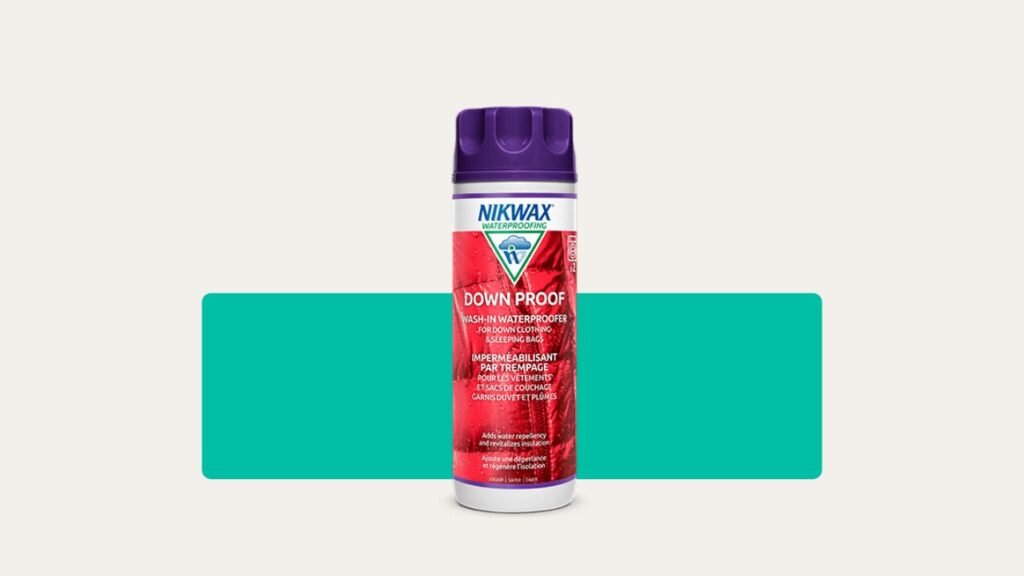
What’s really convenient is that this treatment can go straight into your washing machine. No mess, no faff. Just pour it in, run the wash, and your down jacket comes out with revived weather resistance. It also helps maintain the loft (that comfy fluffiness) and prevents water from weighing your gear down, which is crucial when you’re out on the trail.
Keep in mind, though, this isn’t meant for leather or other tougher fabrics – it’s strictly a down-specific solution. And while it does a good job of restoring water resistance, it’s not going to turn your puffy into a raincoat. However, for anyone who loves their down gear, it’s a handy way to extend its life without sacrificing performance.
Pros
- Tailored for down and feather-filled items
- Helps maintain insulation and loft
- Easy to apply in a washing machine
- Water-based and environmentally friendly
- Reduces weight gain from water absorption
Cons
- Not effective on leather or hardshell fabrics
- Not as water-repellent as sprays designed for outer shells
Best Way to Use Waterproofing Spray
Here’s where many get it wrong: Spray on dirty kit, and the waterproof layer just seals the muck in place. So, always start with a wash. Even if a jacket looks clean, trust me, it’s not. Use a technical wash (or mild soap for furniture) and rinse well.
Always spray in the open air or in a garage with the door wide open. These sprays aren’t perfume. Keep the nozzle about 15cm away, move steadily, and apply a thin, even layer. Watch for oversaturating seams, but don’t miss the shoulders, corners, or places that get extra abuse. For big jobs (awnings, cushions), a second light coating adds extra oomph.
Let it dry naturally. Don’t shove it in the airing cupboard or tumble dryer unless the label says so. It usually dries in a few hours, but read the back of the bottle for specifics.
Reapply as needed. Some gear needs a top-up every season, others after a couple of washes or a stormy weekend. If you notice rain stops beading and starts soaking in, it’s time for a reproof.
Final Note
Before you go, remember that waterproofing isn’t optional for UK camping – even if that is the only thing you gain from this guide. Whether you want your jacket to survive another Peak District hike or you just don’t want garden chairs turning into swamps over winter, the right waterproofing spray makes the job simple.
Don’t believe your gear is waterproof forever. Treat it, check it, and reproof when water stops beading. Your future self (and your dry backside on a rainy night) will thank you for it.
Next time you’re packing for a trip or sorting the garden for spring, get that waterproof spray out. A little effort now means less time spent swearing at soggy kit, and more time enjoying everything the UK’s wild weather can throw at you.
FAQs
Do I really need a waterproof spray?
Waterproof sprays are like giving your outdoor gear a fresh shield against the elements. They help fabrics repel water, meaning your tent, jacket, or backpack stays drier for longer. Sprays also help restore old or worn-out waterproof coatings, so your gear doesn’t give up halfway through a rainy hike.
Can waterproofing spray damage my fabric?
It’s rare, but yes. It can damage your fabric if you use the wrong type for the material. For example, a spray meant for leather might not play well with a lightweight nylon tent. So, always check the label before spraying and, when in doubt, test a small patch first. Also, avoid over-spraying – more isn’t always better.
Will my waterproof spray expire?
Most waterproof sprays don’t have an official expiry date, but they can lose effectiveness if stored too long or in poor conditions (like a hot garage). If the liquid looks separated, smells strange, or just doesn’t seem to work anymore, it’s probably time to grab a new bottle.
How do I apply waterproofing spray?
Easy does it. Start with a clean, dry surface. Shake the bottle well, then spray evenly from a distance of about 6-8 inches. Don’t soak the fabric – just give it a light, even coat. Let it dry completely before using the gear. Some sprays may need a second coat for full effect, and always apply in a well-ventilated area.


